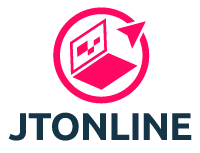Analysis of the audience and purpose of the text
Before you start writing a longread, it is important to determine who it will be intended for. Understanding your audience helps you choose the right tone, style, and content to make your text interesting and useful to readers. This can be done by studying the demographics, interests and needs of the target audience. For example, if your audience is young professionals, you should focus on trends and innovations or sports. If you are writing for older people, it is important to consider their experience and needs for accessible information.
The purpose of the text is also key. It can be entertaining, informing, persuading or educating.. Defining a purpose helps structure the material so that it meets the expectations of readers. For example, if the goal is training, it is important to include detailed explanations and examples. If the goal is persuasion, it is necessary to use arguments and evidence. Also, the purpose of the text can be complex, combining several functions, which makes it more multifaceted and interesting for a wide audience.
Development of narrative structure and logic
The structure of the longread should be clear and logical. Start by creating a plan that includes main sections and subsections. Logical sequence helps keep readers’ attention and makes information easier to perceive. Each section should flow logically into the next, creating a coherent narrative. A plan also helps you avoid unnecessary information and focus on key points. For example, start with the big picture and then move on to more detailed aspects of the topic.
It is important to use headings and subheadings to break up your text. This makes the longread more readable and allows readers to quickly find the information they are interested in. It is also recommended to use lists and highlights to structure the material and highlight important points. A well-designed structure promotes better understanding and retention of information. Adding a summary at the end of each section can help readers quickly refresh their memory of the main points.
Captivating Start: Grabbing Attention
The first thing the reader sees is the title and the first paragraph of the text. The title should be intriguing and attract attention, encouraging further reading. Use strong, emotional words and promises of useful information or an exciting story. For example, the title “How to write a longread that will be read to the end: 10 secrets of success” immediately attracts attention. The first paragraph should support this promise by letting the reader know that they will find something important or interesting in the text.
The beginning of the text should be dynamic and exciting. You can use a question, quote, interesting fact, or anecdote to grab the reader’s interest from the very first lines. It is important to immediately indicate what the longread will be about and why it is important or useful for the reader. A captivating beginning helps establish a connection with the audience and motivates them to continue reading. For example, start with a success story related to the topic to evoke an emotional response and interest the reader.
Use of visual elements and multimedia
Visual elements play an important role in attracting and holding the attention of readers. Photos, illustrations, infographics and videos can make a longread more attractive and interesting. It is important to choose high-quality images that complement the text and help you understand the information better. For example, infographics can visually present statistics that might seem boring in text form. Multimedia can also serve to clarify complex concepts or add emotional impact.
Interactive elements such as graphs, maps, or quizzes can also increase reader engagement. They allow you to interact with the content and make reading more fun. For example, adding an interactive graph that you can customize to your data can make the content more personalized. However, it is important not to overload the text with visual elements so as not to distract from the main information. Optimal use of multimedia makes a longread more dynamic and memorable, creating a rich and varied experience for the reader.
Effective methods of maintaining interest
Maintaining reader interest throughout the text is a key factor in the success of a longread. To do this, it is necessary to diversify the presentation of material, using various stylistic techniques and approaches. For example, you can alternate descriptions with stories, add quotes from experts or reviews from real people. It is also important to monitor the pace of the story so that it remains dynamic and does not let the reader get bored. Sections should be logically connected so that the reader moves smoothly from one idea to the next.
Using rhetorical questions and active verbs helps make the text more lively and engaging. For example, the question “Have you ever wondered why some articles are so easy to read?” encourages the reader to continue reading. Including intriguing headings and subheadings, as well as transitions between sections, helps hold the reader’s attention and guide you through the text. Regular updating of information and adding new data makes the longread relevant and interesting. Including unexpected facts or plot twists also helps keep interest high.
Editing and optimization for readability
Text editing is an important step that helps improve the quality of the material and make it more readable. It is important to check the text for grammatical and spelling errors, as well as for consistency with the style and tone chosen for the audience. Shortening long sentences and paragraphs makes text more readable. It is also recommended to use simple and understandable words, avoiding unnecessary terminology and complex constructions. Here a few key steps for editing and optimization:
- Spelling and grammar checking – this is the basis of quality text. Use automated proofing tools and read the text aloud to catch errors that might be missed.
- Simplifying the language – avoid complex terms and long sentences. Brevity and clarity make the text accessible to a wide audience.
- Text structuring – the use of headings, subheadings, lists and highlights helps to structure the material and facilitates the perception of information.
- Using visual elements – illustrations, infographics and other visual elements make the text more attractive and easier to read.
- Optimization for mobile devices – many readers use mobile devices to read, so the text must be adapted for different screens.
The final stage is checking the overall impression of the text. It is important that it be holistic and logically complete. Make sure that each section flows smoothly into the next, and that all key points are presented clearly and understandably. Improving readability helps maintain attention and makes information easier to absorb, making the longread more appealing to a wider audience.
Questions and answers
Answer 1: Identifying your audience helps you choose the right tone, style, and content of your text to make it interesting and useful to your readers.
Answer 2: A clear structure helps hold readers’ attention, makes information easier to digest, and creates a coherent narrative.
Answer 3: It is important to use an intriguing title and a dynamic opening, including strong words, interesting facts or anecdotes to immediately grab the reader’s interest.
Answer 4: Visual elements make a longread more attractive and interesting, help to better understand the information and hold the attention of readers.
Answer 5: It is important to diversify the presentation of the material, use rhetorical questions, active verbs, intriguing headings and subheadings, and update information.




